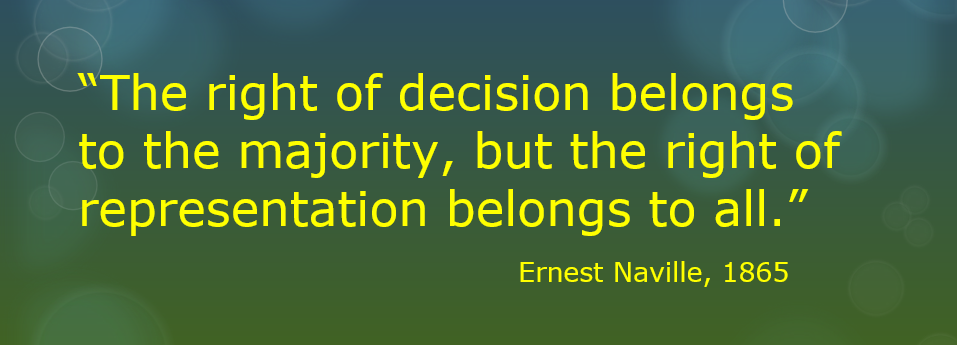
Presentations
As supporters of proportional representation, all of us make presentations at one time or another, whether it is a 15 second elevator pitch, a five minute conversation with dinner guests, a 10 minute presentation to the Rotary Club, or a 45 minute lecture to a university class.
white space
Some general pointers
white space
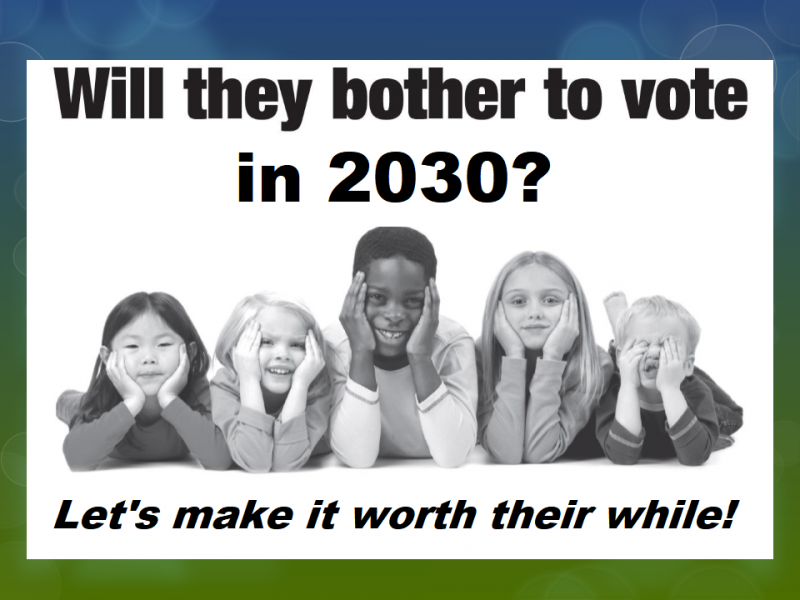 Size up your audience.
Size up your audience.
Every presentation is different. Decide what your core message is going to be and how best to tell an inspirational story. Decide what your ask should be.
Focus on two or three core messages.
Most people will only take away one or two ideas from a presentation. Make sure your presentation has a good sense of flow and emphasize your core takeaways up front and at the end.
Avoid the technicalities.
We are becoming increasingly aware that the technical details of PR systems are neither necessary, nor terribly helpful, because most people don’t aspire to be technical experts and we don’t want the details to distract people from the core message about the need for PR. For most audiences, what we are seeking to do is to drive home our core messages in the most compelling way possible. Below are two graphics taken from a Jeff Jeffers presentation that can be used to quickly and simply explain how PR works.
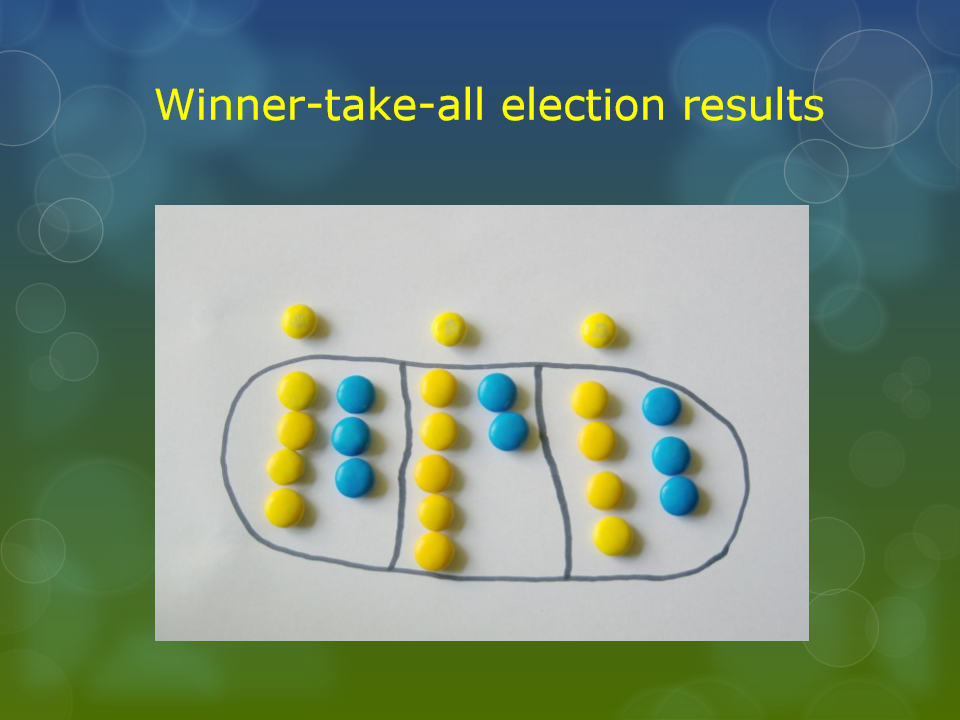
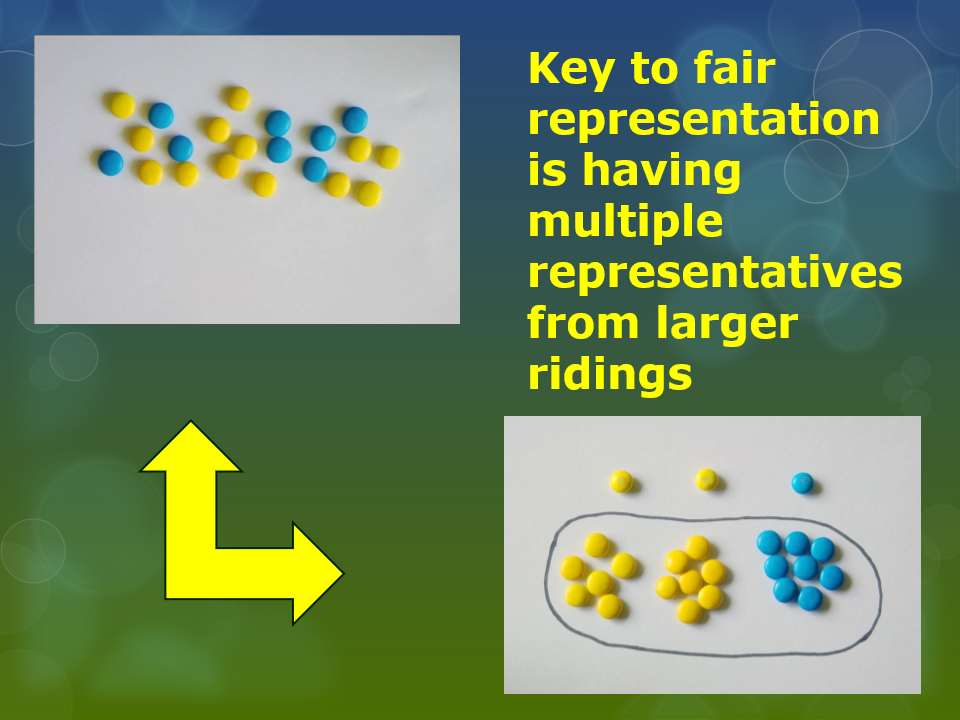
Don’t get carried away with the graphics.
Great graphics go a long way, and FVC has an excellent collection of graphics that have been incorporated in past presentations (see below). Making use of past presentations to find the graphics you need is one of the best things you can do. However, graphics can also distract from your story, so it’s best to decide on your story line first, and then decide on your choice of graphics to give life to your presentation.
white
Where to start?
white space
Our FVC Chapter Resources Google Drive contains a large collection of presentations that you can draw upon for inspiration, including some in French. Some of them have 90 or more slides in them and provide a menu of slides to draw from. The best presentations generally have no more than 30 slides.
There is no perfect slide presentation that one can pick off the shelf. All are time bound, usually campaign specific, and targeted to a particular audience. However, if one must start somewhere, a good example is the Sept. 2, 2018 deck produced by Kamloops chapter leader Gisela Ruckert for the FVC BC referendum campaign. This is a PPT deck that you can download and view using Microsoft PPT software. It has outstanding graphics and comes with detailed speaker notes, so the story behind the graphics is also included. You can start with the long version, which includes 65 slides and 20 supplementary slides, but a shorter version consisting of only 18 slides is also available.
Another excellent example from BC is Terry Dance Benninck’s 28 slide presentation to the Council of Canadians in Nov. 2017.
Below are some tips on what to include in your presentation and where to look for examples.
white
Tips on Content And Where to Look for Ideas and Graphics
white
Here’s a list of the key themes that tend to be covered in the various presentations:
Getting to know each other
Start by saying a few words about FVC, and also about your own personal story. How and why did you get into this? Say a few words about your audience, to establish a connection.
Outline
Tell them what questions you are going to cover and your key messages. Tell them in advance that you are here to encourage them to become involved because this is an important subject for the health of our democracy.
Representative Democracy and PR
Explain that PR is simply a principle whereby the composition of the legislature accurately mirrors how people voted.
Problems with FPTP
All of the decks cover the failings of First-past-the-post and there is a plethora of graphics to choose from. Most have to do with the distortions and wasting of votes under FPTP, but there are important arguments to be made as well about geographical imbalances, policy lurch, hyper-partisanship and the emphasis on short-term wedge issues that our system encourages. Keep in mind that different audiences may prioritize the problems with FPTP differently. It’s not just about fairness. It’s also about accountability and effective governance – subjects of fundamental importance to all of us.
Who Uses PR?
Most decks emphasize that 85% of OECD countries use PR and make us of a map showing which parts of the world use different types of electoral systems. Click here for an explanation of this map.
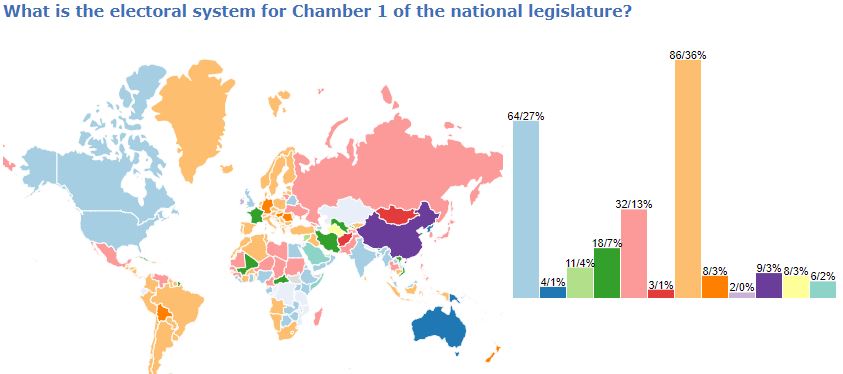
How does it work?
As noted earlier, in most settings only a general statement on PR systems is needed.The general rule is simple – you can’t have PR with nothing but single member ridings. What you can do is group ridings together in multi-member districts, or you can set aside a certain share of the seats to be used as top-ups.The emphasis should be that any PR system would be an improvement on FPTP.
However, to counter some of the myths about PR, it can be useful to specify the features that have been incorporated in virtually all Made-in-Canada PR proposals, as enunciated in the slide below.
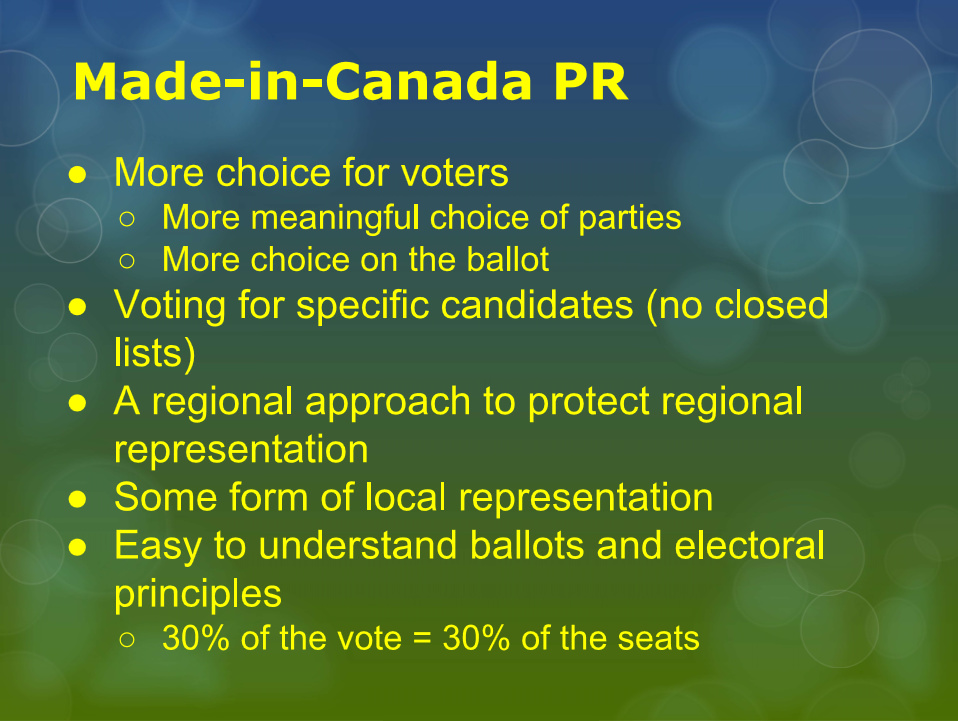

How well does it work?
Here too, there is no shortage of good slides and graphics on subjects like the representation of women in parliament, voter turnout, etc. Anita Nickerson’s PR 101 deck has an abundance of these starting at slide 36, “Why Proportional Representation?” Our resource paper, “A Look at the Evidence” provides the backing for these slides.
The politics of PR
If proportional representation is so great, why don’t we have it already? This question should probably be addressed more often in our presentations. As Réal Lavergne puts it the second section of his presentation titled Theory and Practice, “The Devil Is In the Politics!” (slides 16-23). When dealing with this subject, you should also assess the opportunities of the hour and how to make the best of them. The fact that Fair Vote Canada is usually engaged on multiple fronts at the same time gives us access to a greater range of opportunities and increases our chances of success.
The ask
By this time, you have made it clear that changing our electoral system is in our interest as citizens, but change is only going to happen if citizens demand it and become involved. Presentations should normally end with an ask: sign up, donate, become involved, vote yes in the referendum – whatever combination of asks is most appropriate for your audience.
Resources for teachers
FVC has never been as active in schools as we might be, but there is considerable potential there. With this in mind, FVC has worked for some time on some basic resources that can serve as a base at the high school level. As with any other presentation, any future effort of this sort would have to build on the reality and opportunities of the moment but we seek to avoid any unnecessary duplication of effort.
